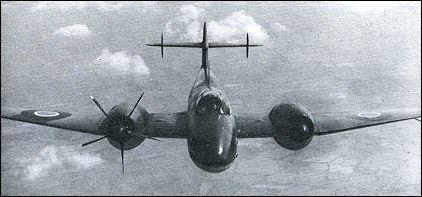 |
Gloster Trent-Meteor1945 |  |
| EXPERIMENTAL AIRCRAFT | Virtual Aircraft Museum / United Kingdom / Gloster |
 |
The Gloster Trent-Meteor has a unique place in aviation history as the aircraft which pioneered turboprop power, and this type of powerplant has since become one of the standard types of engine used on short- and medium-range airliners. The aircraft used for the Trent conversion was one of the first batch of production Gloster Meteor F.1 fighters, EE227, modified for trials. In February 1945, with the RAF's immediate needs catered for by the delivery of the improved Meteor F.3, EE227 was converted back to F.1 standard and handed over to the Rolls-Royce facility at Hucknall as a flying testbed for the newly developed RB.50 Trent propeller-turbine, or turboprop. Such a powerplant seemed to offer many of the advantages of turbine power (relative simplicity, high power and lack of vibration) combined with the proven capabilities of the propeller (high aerodynamic efficiency even up to quite high Mach numbers). Rolls-Royce therefore began to develop the experimental Trent in May 1944, using as the basis of the engine the centrifugal-flow Derwent turbojet which was to power the F.3 and later marks of the Meteor. The Trent-Meteor needed little modification for the accommodation of the Trent powerplant, though the nacelles were somewhat larger, which, with the extra side area of the propellers, entailed the fitting of two small auxiliary fins towards the outboard ends of the tailplane to ensure directional stability. The Gloster Trent-Meteor first flew on September 20, 1945 and thereafter contributed greatly to the development of turbine engines as pure turbojets and as turboprops. In its first form, the Trent-Meteor was fitted with five-blade Rotol propellers, each having a diameter of 2.41m, though some reports claim a propeller with a diameter of 2.31m absorbing 750hp and leaving 454kg of residual thrust. Later, the aircraft was modified to accommodate propellers with a diameter of 1.49m, absorbing only 350hp and leaving a residual thrust of 635kg to emerge from a squeezed orifice. The Trent was intended only as a research engine, and valuable results were obtained, especially in determining the effect of a propeller hub on the efficiency of the turbine's air intake, and in the development of suitable reduction gears.
|  COMPANY PROFILE | ||||||||||||||||||||||||||||||
 |

|


Working on? As in, a fully fledged Gloster-Trent Meteor replica?
reply